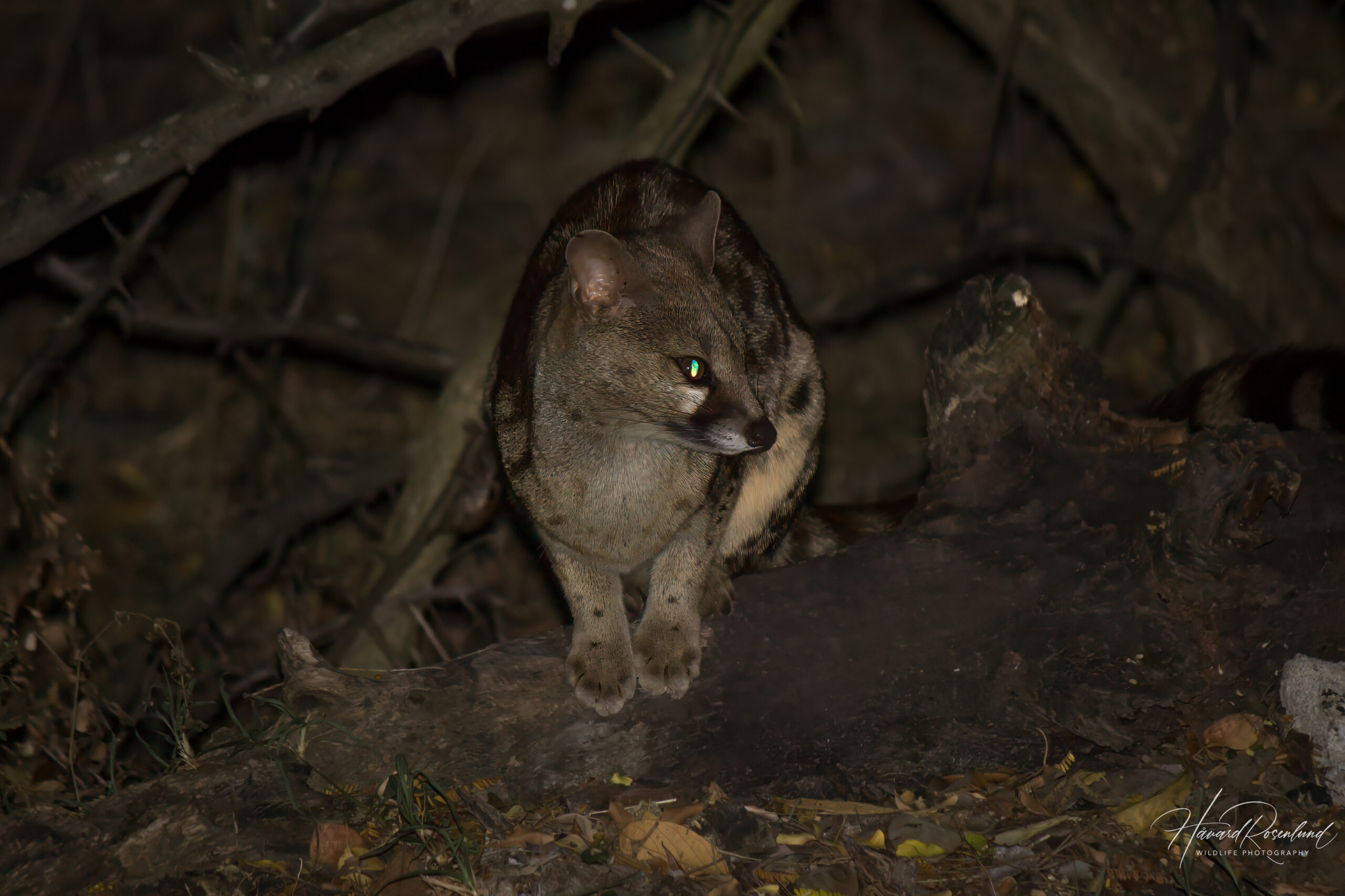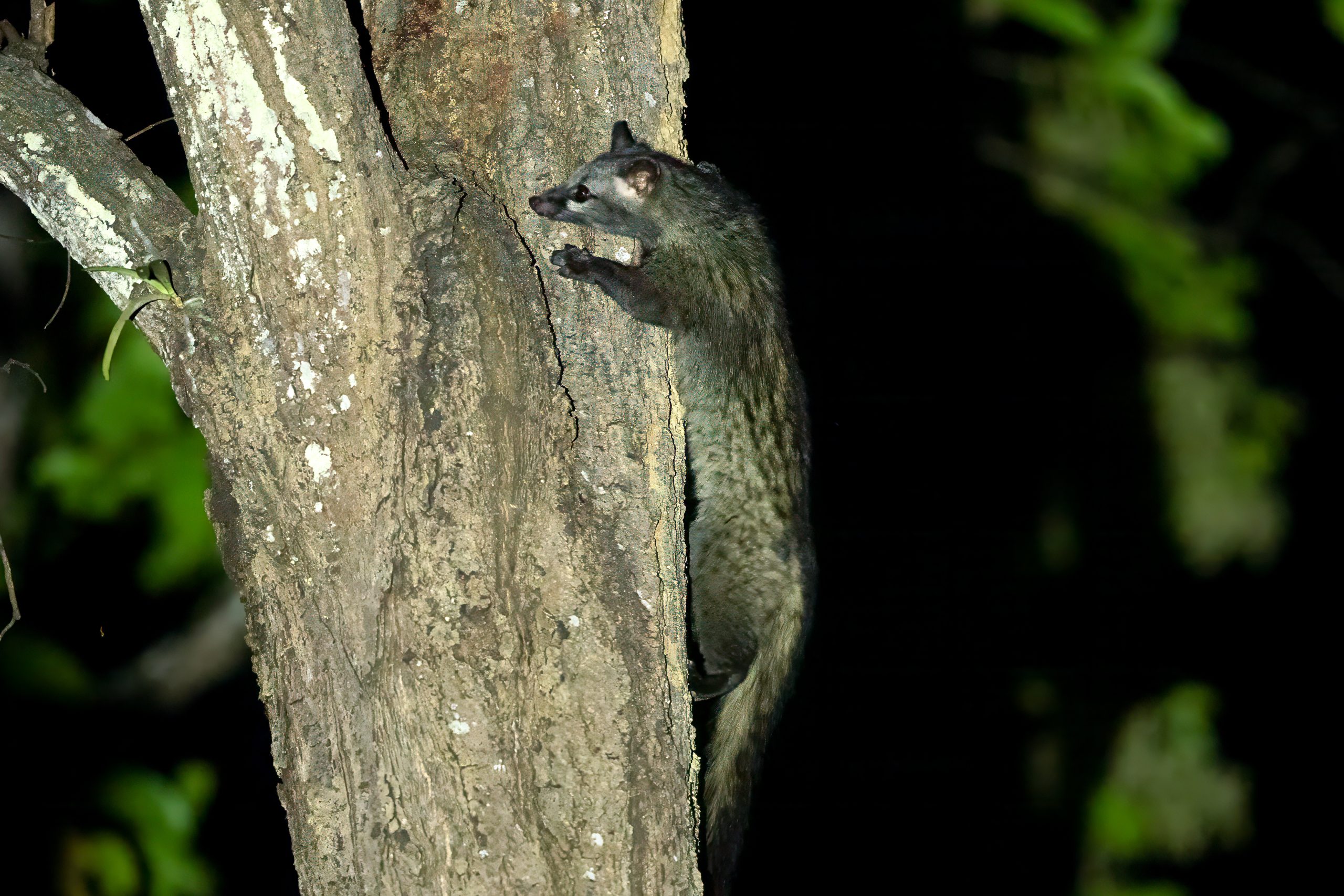Description
The rusty-spotted genet (Genetta maculata), also known as large-spotted genet and blotched genet, is a widespread species of African genet. Genets are small cat-like carnivores in the Viverridae family, which is closely related to the mongoose family. Both viverrids and mongooses are distantly related to cats.
The rusty-spotted genet is very similar to the common genet (Genetta genetta) but has markedly larger spots and no crest along the spine which is commonly found on other genet species. In South Africa it can be confused with the closely related Cape genet (Genetta tigrina), which is typically darker (especially the limbs are markedly darker), as well as having more sparsely distributed black spots on the body. The two species only overlap in southern KwaZulu-Natal. Color varies between regions, but rusty-spotted genets are typically yellowish-grey and spots are rust-colored to black. Markings are fainter in drier areas and more prominent in moister areas. As other genets, it has a long slender body, a long tail, and short legs. There is little variation between sexes. Body length averages 49-60 cm (19-24 in) and the tail 42-50 cm (16.5-21.3 in). Weight averages 1.82 kg (4 lb).
Diet & habitat
Rusty-spotted genets are semi-arboreal, meaning they spend a lot of their time in trees. They inhabit a great variation of habitats but prefer forested areas and dense vegetation with access to water. In the drier areas within their range, they are almost exclusively found close to water sources. Diet mainly consists of invertebrates and rodents. Birds and fish are also common prey. They will additionally feed on grass to help regulate and balance stomach content.
Behavior
The rusty-spotted genet is a solitary animal, although occasionally found in pairs. It is mainly nocturnal and will spend most of the day sleeping hidden in a tree or in dense cover. At night it will hunt for prey, patrol, and scent mark its territory. It relies on stealth, speed and agility when hunting and will catch its prey using ambush strategies similar to smaller cats. It will use musk glands to scent mark territory as well as to communicate physiological states with other members of the species.
Reproduction
It is believed that breeding can occur throughout the year. Females will use scent marking to inform males when they are ready to mate. After a successful copulation there will be a gestation period of 70 days before a litter of 1-5 young is born. A female will make a nest prior to birth, and the litter will remain in the nest until they are developed enough to venture out on their own. Young are born blind and can see after eight days. The mother will stay with the young for six to eleven weeks, and sometimes as much as six months to ensure the offspring will be able to fend for itself.
Status
Despite human population growth the rusty-spotted genet has been able to adapt very well. There are no major threats to this species, and it is listed as least concern on the IUCN Red List.






